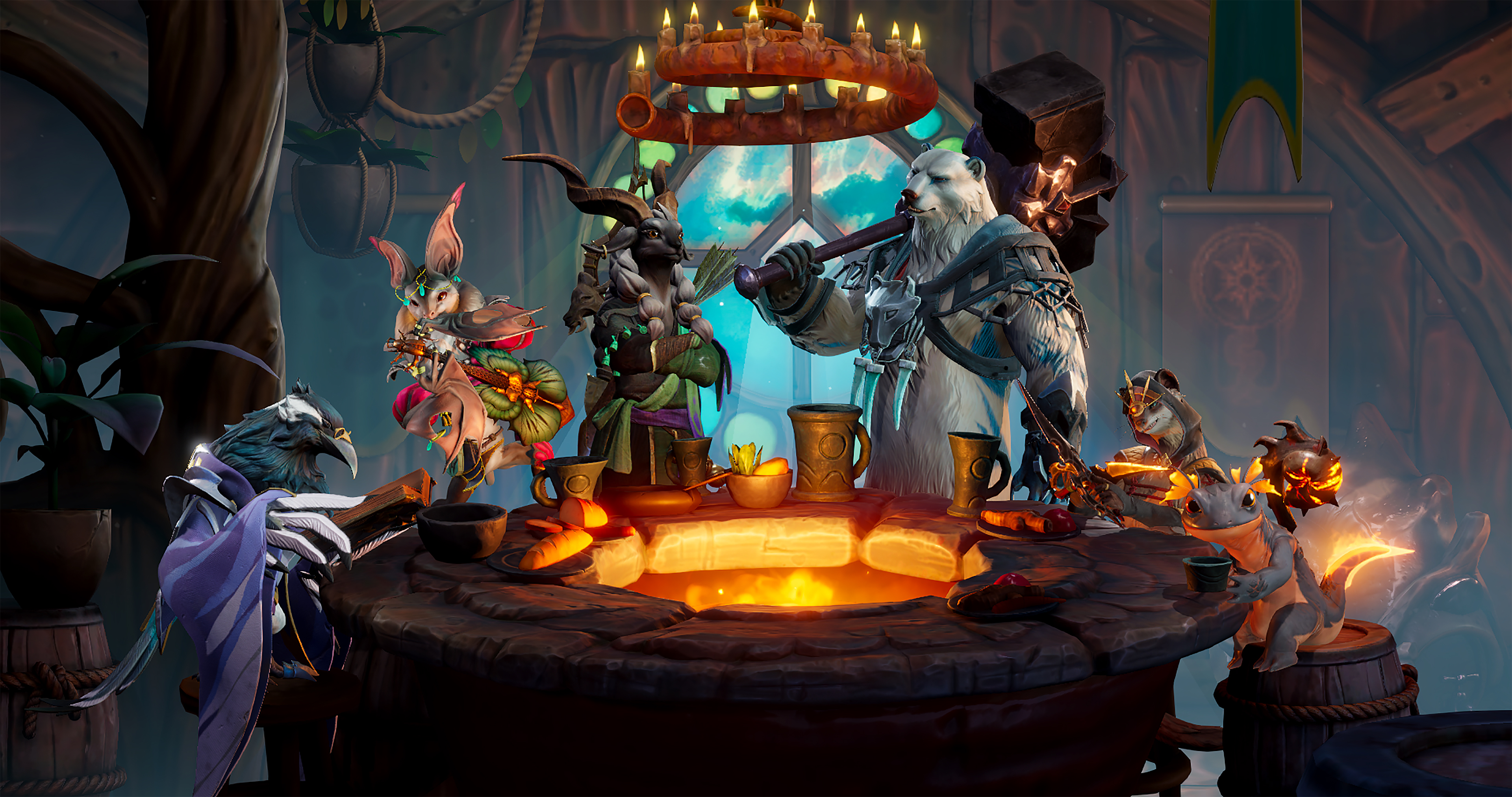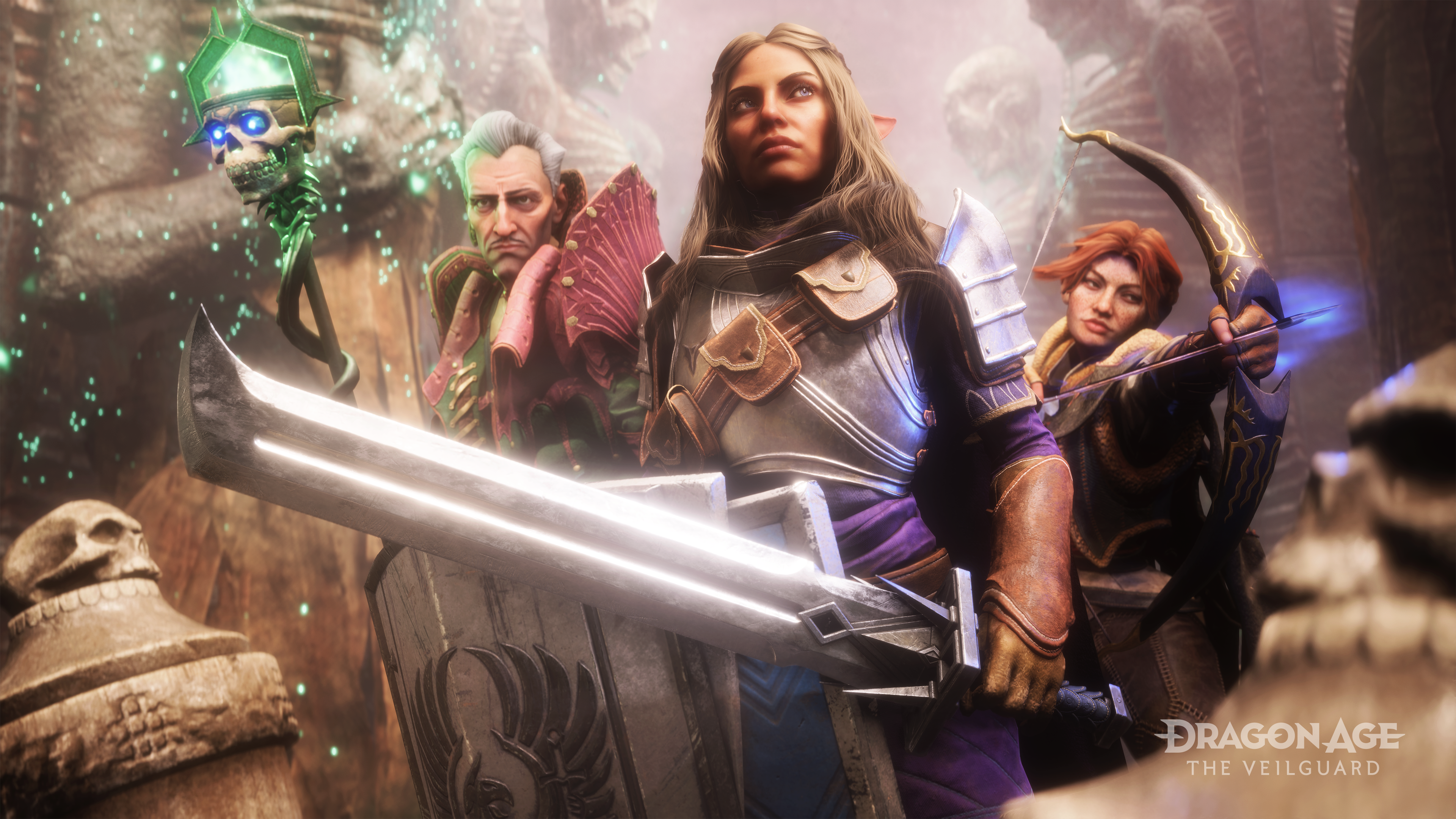
When Blizzard Entertainment veterans, including Mike Morhaime, Chris Sigaty, and Alan Dabiri, left the company behind Warcraft and Starcraft to form new studio Dreamhaven in 2020, Morhaime pledged that his new company could “bring people together regardless of backgrounds or boundaries.” Dreamhaven would create new, positive communal experiences, its founders said.
Dreamhaven, which encompasses two studios, Moonshot Games and Secret Door, has been relatively quiet since then. On Thursday, one of the development teams finally revealed what it’s been up to for the past four years: Secret Door is making a game called Sunderfolk, an ambitious co-op tactical adventure video game built on a love of tabletop games.
Sunderfolk is inspired by tabletop games like Gloomhaven and Dungeons & Dragons, said head of Secret Door (and hardcore tabletop game enthusiast) Chris Sigaty at a recent hands-on event in New York. The developers behind Sunderfolk were inspired by the depth and inclusiveness of those games, while also recognizing their shortcomings.
“We’ve worked on games like StarCraft, Heroes of the Storm, and Hearthstone,” Sigaty said, “and one of the things we realized upfront was that we didn’t want to start with a competitive game. Even though we love and have a lot of knowledge in that space, we wanted to focus on something that was connective or collaborative. We found that we were having the most connective moments actually around a board game table, playing things like Dungeons & Dragons and board games of all sorts, and that our passion was in this space of tabletop gaming.”
But, Sigaty acknowledged, many tabletop games require reading through thick manuals paired with lengthy setup and breakdown times. In a strategic card-based tabletop game like Gloomhaven or Frosthaven, new players may spend hours unpacking the box, learning the rules, and cleaning up, instead of spending that time actually playing.
With Sunderfolk, Secret Door hopes to address those obstacles to fun.

Sunderfolk is designed to be played on a large TV screen or monitor, with the game itself running on a PC or console. Between one and four players interact with the game on an app running on a mobile device, similar to the Jackbox games. That setup means that just about anyone can play, because all the game rules are running on a computer and virtually everyone knows how to use a touchscreen to navigate an app.
In Sunderfolk, players choose from one of six anthropomorphic heroes: an Arcanist, Bard, Berserker, Pyromancer, Ranger, or Rogue. (More are planned as DLC, developers said.) Each character has their own strategic role and passive ability, and can be customized with weapons, armor, trinkets, and skills. Each character’s suite of abilities is represented by cards, and players can personalize their deck of skill cards as they progress to create a well-rounded party.
No matter how good your deck of cards or team composition is, like any good tabletop game, there’s an element of luck to how things play out in Sunderfolk. Any time a player uses a skill, they’ll also need to play their Fate Card, which can impact the effectiveness of their move. It’s kind of like a 20-sided die in D&D; some rolls may have positive effects while others have negative effects. Intriguingly, though, the Fate Card can be customized — you can choose which negative and positive effects you might roll, earning new options as you progress through Sunderfolk’s story.
On the main screen, the tactical strategy action plays out on a hex-based board. On my phone, I navigated that hexagonal grid by dragging my finger across a touchscreen, selecting cards to attack, and confirming my moves through an intuitive interface. A game master guided us through what was happening on screen and through text on our phones.

In my hands-on time with the game, I played the role of a Pyromancer (a very cute salamander) who could cast fireballs and leap around the board to attack enemy ogres and skeletons. My Pyromancer could shoot columns of fire in a straight line, or emit an area-of-effect blast. Licks of flame that I left in my salamander’s path could hurt enemies and buff my allies.
Joining my Pyromancer were Sigaty’s Berserker, a polar bear who could bash and throw enemies, and who became powerfully enraged by fires I’d set on the board; and Dabiri’s Bard, a bat who, through the power of music, could enchant enemies and allies to coax them around the board. The Bard also spawned various power-ups around the battlefield, dropping health, armor, and damage bonuses.
As a trio, we discussed strategies about how to optimize our turns and how we needed to best position ourselves on the board. Unlike Dungeons & Dragons, there’s no “initiative” that determines the order of turns during combat; we could choose to go in any order, so as best to maximize our team’s potential. There’s also no sharing of loot and gold in Sunderfolk, so we’d also be jockeying for position, trying to snatch treasure before anyone else in the group could get it.
The promise of Sunderfolk showed itself in these moments. We were talking, debating, and scheming. Sometimes we were standing up, walking over to the TV, and visualizing our strategy, pointing to monsters we thought we could take down and considering other possible threats on the board. I looked to Sigaty and Dibari to verify my theories about how a move or series of moves would play out, but the game does an excellent job of explaining its rules.

Normally, a tabletop game with the ruleset and complexity of Sunderfolk would require a knowledgeable game master to run the thing. While the game itself performs the role of making everything go smoothly, Secret Door has a solution for the other job of a game master: Telling the story.
Secret Door has hired Anjali Bhimani — the actor behind Overwatch’s Symmetra and Apex Legends’ Rampart — to voice Sunderfolk’s game master. Bhimani performs this role like a real-life game master: She not only narrates the events of the story, she voices every non-player character in the game, affecting various vocal styles to match the game’s anthropomorphic animal cast.
Sunderfolk’s story is set in a fantasy world that has been ravaged by an event known as the Sundering. That cataclysm forces its animal population underground, where they take refuge in a city known as Arden. This underground home is the heroes’ base of operations; between missions, they can speak with the residents of Arden, forming friendships, forging alliances, and even developing romances. In Arden, players will have a respite from battle, buying new gear, customizing their loadouts, and finding new quests.
While battles above ground in the Sunderlands can be intense, players will have a chance to unwind and relax while in Arden. Maybe even take a bathroom break. Activities in Arden are experienced in the mobile app, and offer some light role-playing opportunities.

Sunderfolk’s phone app has another clever application. While much of the group action takes place on a communal screen, players will occasionally receive private secret messages from the game master on their mobile devices. These interactions include the ability to name things in the game world — early in my hands-on time, I was asked by the game master if I could name a new type of enemy we’d encountered, archer ogres. I typed in “Bowgres” and that’s what they were named for the rest of the game. In another instance, I was informed via my phone that there might be a secret treasure hidden in the corner of a level; I was encouraged to go grab it, and whether or not I would tell my teammates about it was up to me.
Secret Door calls Sunderfolk a “streamlined alternative to the traditional tabletop-gaming experience,” promising to make “playing and having fun together more accessible than ever.” Sigaty and team hope it will help lapsed tabletop game players “rediscover game night” or encourage the tabletop-game-curious to experience it for the first time.
Sunderfolk is slated to be released on Nintendo Switch, PlayStation 5, Windows PC, and Xbox Series X sometime in 2025 as a premium paid game. The companion/controller app for Android and iOS will be free, and players can quickly join a game by scanning a QR code. While it’s intended to be played in person, Sunderfolk can also be played remotely, via Discord and Zoom, thanks to its app interface.
Whether Sunderfolk can “bring back game night” and convert the tabletop-gaming averse — sessions of the game can eat up a few hours — remains to be seen. But Secret Door’s debut effort is already incredibly compelling and fun, and might just expose a whole new audience to the allure of friendly tabletop play.
Source:https://www.polygon.com/impressions/464217/sunderfolk-preview-dreamhaven-secret-door






